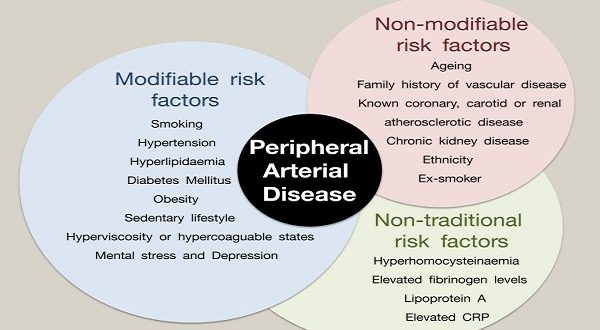Peripheral artery disease happens when too much fat is built up in the arteries, causing narrowing and blockage of the blood vessels. Therefore, the patient experiences reduced blood circulation, leading to various complications. While the disease can happen to anyone, there are certain risk factors that increase your chances.
In some cases, a person with peripheral artery disease (PAD) may not experience any symptoms until the condition has progressed to a severe extent. This is why it is important to be educated about it. If you suspect you have PAD, consult with an expert for peripheral arterial disease El Paso today.
What are the symptoms of peripheral arterial disease?
Peripheral artery disease, or PAD, can be dangerous because, in some cases, the person may not experience any symptoms at all until the condition has advanced. The symptoms may vary depending on the body part that is affected but may include the following:
- Intermittent pain
- Wounds that won’t heal
- Blackened patches on the skin
- The affected body part is cold
- Numbness
- Pins and needles
- Muscular weakness
- Pain worsens during exercise
- Pain eases during rest
Who is at risk of peripheral artery disease?
While peripheral artery disease can happen to anyone, certain risk factors increase your chances of getting the disease. In some cases, a person with no risk factor may acquire the disease, while a person with one or more factors may remain healthy.
The following are the risk factors of peripheral artery disease:
- Age (especially older than age 50)
- Male gender
- History of heart disease
- High cholesterol
- High blood pressure
- Postmenopausal women
- Family history
- Coronary artery disease
- Diabetes
- Overweight
- Physical inactivity
- Smoking
People who smoke and have diabetes have the highest risk, as these conditions can cause restricted blood flow.
As you can see, there are certain risk factors you can control, such as your weight, smoking habits, physical inactivity, etc. However, you cannot control your age or family history.
How is the disease treated?
Taking steps to control the symptoms can prevent the progression of the condition and lower the risk of a heart attack or stroke.
Treatment options may include the following:
- Lifestyle changes.
- Aggressive treatment of conditions like diabetes, high cholesterol, high blood pressure, etc.
- Medication to improve blood flow.
- Vascular surgery
- Angioplasty
- Surgical insertion of a stent
- Atherectomy
- Bypass surgery
Things you can do to manage symptoms include:
- Quit smoking.
- Exercise regularly.
- Maintain a healthy weight.
- Eat a good diet.
- See your doctor for regular checkups.
- Follow your doctor’s instructions and guidelines.
 Magazine Today
Magazine Today

